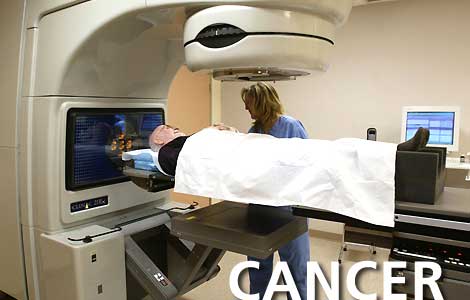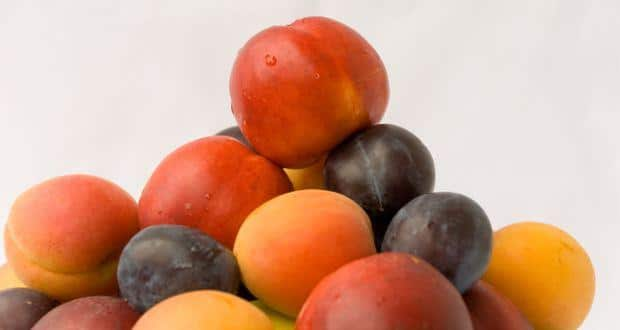Cancer Treatment Options
What Are The Treatment Options Available To Cancer Victims?
There are many methods used in the treatment of cancer. They include radiation treatment, chemotherapy treatment and surgery. All this methods are meant to stop the spread of cancerous cells. However, when you look at the statistics, details it reveals about the ailment is a bit shocking. In the modern times, more focus is now being placed on detox, liver flushes methods and the diet as better methods of managing cancer.
Existing Cancer treatments in our Century
 It makes use of higher energy radiation that kills the cancer cells. The rays damage the DNA of the cancerous cells destroying them completely. The problem with this method is that it damages both the normal and the cancer cells. This makes it necessary to have the treatment planned carefully so as to minimize the side effect. A machine may be used to produce these rays or doctors may place a radioactive material close to the tumor cells or inject it in the bloodstream. A patient may receive the radiation during or after surgery depending on the type of cancer that is being treated, the radiation shrinks tumors and kills the cancerous cells. The rays that are popularly used include the X-ray, and the gamma rays which have charged particles that are used to treat radiation.
It makes use of higher energy radiation that kills the cancer cells. The rays damage the DNA of the cancerous cells destroying them completely. The problem with this method is that it damages both the normal and the cancer cells. This makes it necessary to have the treatment planned carefully so as to minimize the side effect. A machine may be used to produce these rays or doctors may place a radioactive material close to the tumor cells or inject it in the bloodstream. A patient may receive the radiation during or after surgery depending on the type of cancer that is being treated, the radiation shrinks tumors and kills the cancerous cells. The rays that are popularly used include the X-ray, and the gamma rays which have charged particles that are used to treat radiation.
- Surgery
It can be used to diagnose, prevent or treat cancer. In most cases, cancer patients may have to undergo some form of surgery. Surgery has often offered the greatest chances for cure especially in cases where the cancer has not spread to most parts of the body.
- Chemotherapy
This is where drugs or medicine is used to treat cancer. The term chemotherapy is always misunderstood and the thought of having it has always frightened many people. However, when the patients are told what chemotherapy is and how it works it can help allay their fear and calm them down. It also enables the patients have a better sense of control over the treatment.
- Targeted therapy
This is a new method of treating cancer that utilizes drugs and other substances that identifies and attacks the cancer cells while doing little or no damage to the normal cells. This method is becoming popular in the treatment of cancer.
- Immunotherapy
This treatment uses the body’s own immune system to help one fight cancer
- Hyperthermia
This is where heat is used to treat cancer that has been with the patient for a long period of time. With the invention of new tools, more precise delivery of heat will be more effective in treating cancer.
- Stem cell transplant
This method is also referred to as peripheral blood, cord blood transplant and Bone Marrow transplant.
- Photodynamic therapy
PDT is a treatment that makes use of special drugs referred to as photosensitizing agents. It also makes use of light in its effort to kill the cancer cells. The drugs work after being activated by some kind of light
 All this methods have for many years been used to treat cancer but none of them has been 100 % effective in managing and treating cancer. The latest research shows that diet and nutrition play an important part in the cancer treatment. Patients suffering from cancer are strongly advised to eat the right kind of diet which helps them to feel better and stronger. Good nutrition is necessary since the disease may affect your appetite or can affect the body’s ability to tolerate certain types of food. Low fiber diet may be recommended if you have trouble with digesting food, cramping or if you have undergone some type of surgery. The patient may also be put on dietary supplement to help improve the quality of his life.
All this methods have for many years been used to treat cancer but none of them has been 100 % effective in managing and treating cancer. The latest research shows that diet and nutrition play an important part in the cancer treatment. Patients suffering from cancer are strongly advised to eat the right kind of diet which helps them to feel better and stronger. Good nutrition is necessary since the disease may affect your appetite or can affect the body’s ability to tolerate certain types of food. Low fiber diet may be recommended if you have trouble with digesting food, cramping or if you have undergone some type of surgery. The patient may also be put on dietary supplement to help improve the quality of his life.
- Liver flush treatment
Liver flushes is a method intended to get rid of microbes in various organs of the body such as such as the liver, gallbladder, pancreas, the colon so that the cancer treatment can take place. These microbes steel some energy from the cells, they intercept nutrients and at the same time excrete mycotoxins. This makes the organ to become weak and lowers the immune system of their body. Liver flushes thus supercharges the immune system and allows various cancer treatment methods to be used.
- Detrofication
Detrofication may take place through sweating and colonics removal of toxins from the body. This may to some extend reverse cancer. Some research show that coffee enemas detoxification may be used to cure cancer. Juicing and good dieting strengthens the immune system and the healing of the body. However,the emotions must be healed and traumatizing events forgotten if the treatment of cancer is to succeed. Detoxification can be done in the health center or it can be done at home. Avoid foods that have toxins. Remember the air we breathe as well as the water we take has toxic substances. The bags used to package processed foods have toxins and they should also be avoided.
Use the following to remove toxins in your body at home.
- Bentonite clay
- Castor oil
- Coffee enemas
- Engaging in activities which can lead to sweating helps the body of eliminate toxics from the body







 Currently the doctor is
Currently the doctor is 



 Eating peaches may slow breast cancer growth and spread
Eating peaches may slow breast cancer growth and spread









 Table Talk: What Are GMOs?
Table Talk: What Are GMOs?
 As ad claims fly on GMO labeling, some caveats
As ad claims fly on GMO labeling, some caveats As ad claims fly on GMO labeling, some caveats
As ad claims fly on GMO labeling, some caveats

